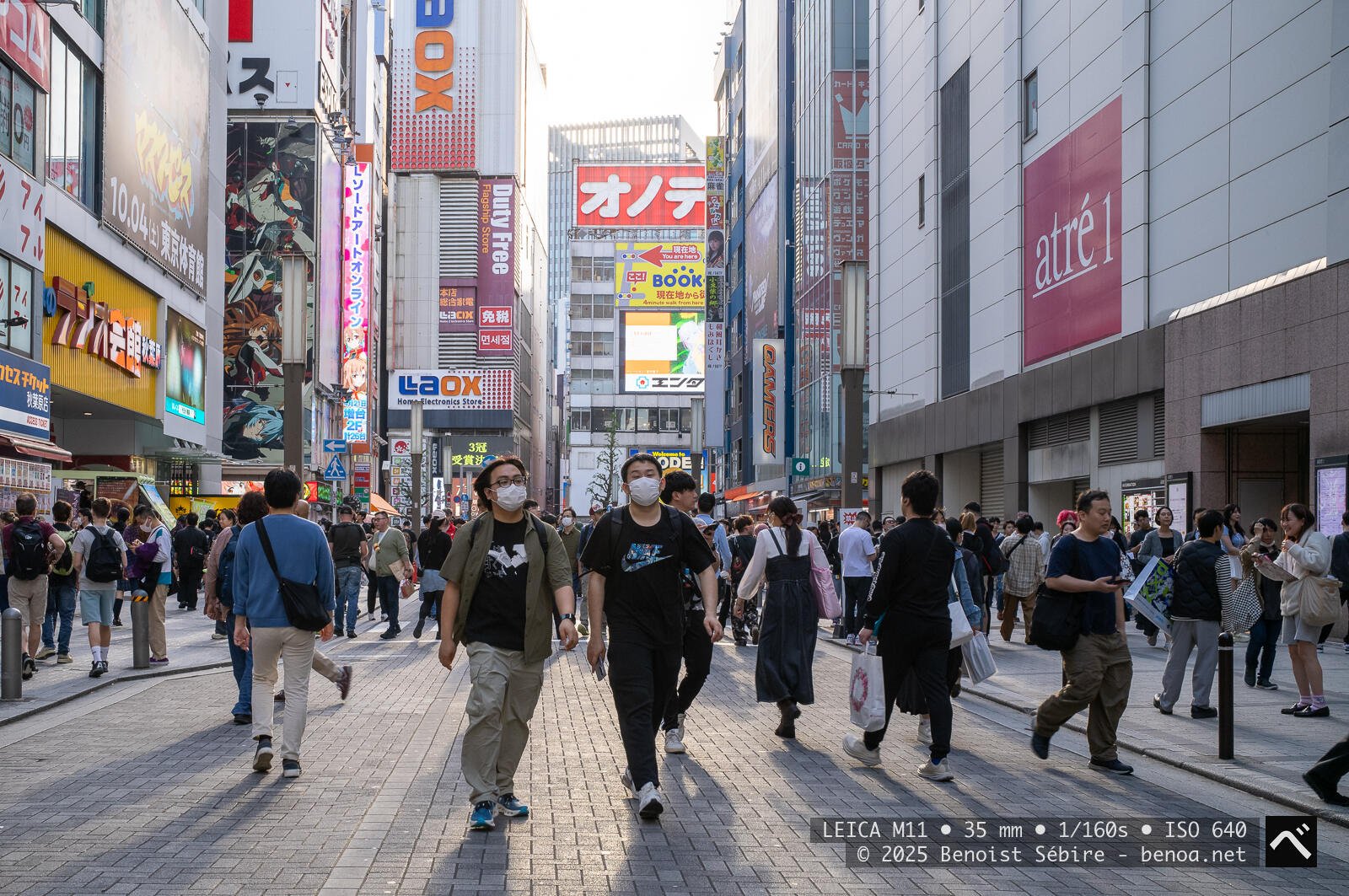Akiba Sunday

Sunday in Akihabara—Tokyo’s Electric Town—is a surreal experience. By noon, the main street, Chuo Dori, shuts down to traffic and turns into a pedestrian zone. Locals, tourists, cosplayers, and camera crews take over the asphalt. The street becomes a moving showcase of otaku culture: anime shirts, bags stuffed with merch, kids filming TikToks in cosplay, and performers singing anime songs under blinking LED signs. The whole area buzzes like a live-action anime set.

Maid cafés have gone from niche oddities to major tourist draws. You’ll see maids in themed outfits—cyberpunk, fantasy, sci-fi—handing out flyers with overly polite English and practiced smiles. Inside, the experience is part performance, part novelty, with scripted greetings, “magic” food chants, and elaborate décor that feels like a hybrid of theater and café. These cafés have become a major part of the modern Akihabara experience, especially for foreign visitors.

But as the anime and gaming industries grow, the Akihabara of old is disappearing. The stalls that once sold vacuum tubes, resistors, and obscure PC parts are vanishing, pushed out by anime megastores, gacha towers, and hotel developments. What used to be a hub for hobbyists and engineers is slowly being transformed into a tourist-friendly pop culture district. It’s a shift you can feel in the architecture—more glass, more branding, fewer cramped stairwells full of tangled wires and tech.

Still, if you know where to look, the heart of the old Akiba is hanging on. A few buildings up from the main road still house hobbyist dens: tiny rooms packed with CRT monitors, doujin game collections, and retro tech. In the quieter backstreets, you might stumble across a secondhand shop run by a retiree who’s been selling obscure parts for decades. There’s history in these places, stubborn and quiet.

Akihabara today is a district in flux—part theme park, part memory. It’s adapting to survive, shifting to meet global demand while trying to hold onto its roots. On a Sunday, when the streets fill with sound and color, you can see both versions at once: the new Akiba, gleaming and global, and the old one, tucked away in second-floor rooms and half-forgotten alleys. Blink, and your favorite shop might be gone. But turn the corner, and there’s still a good chance you’ll find something weirder—and more wonderful—waiting.



